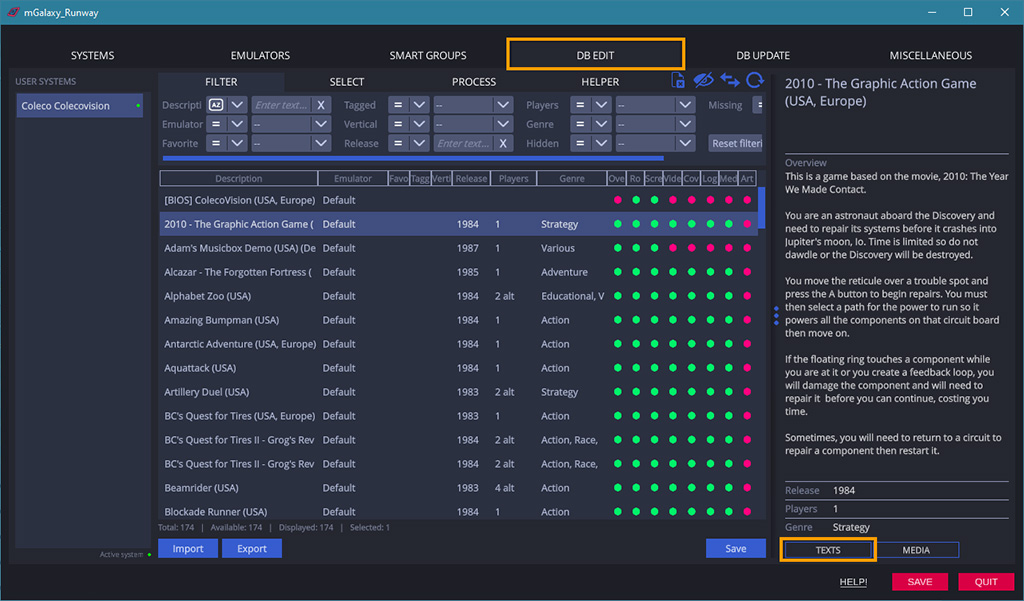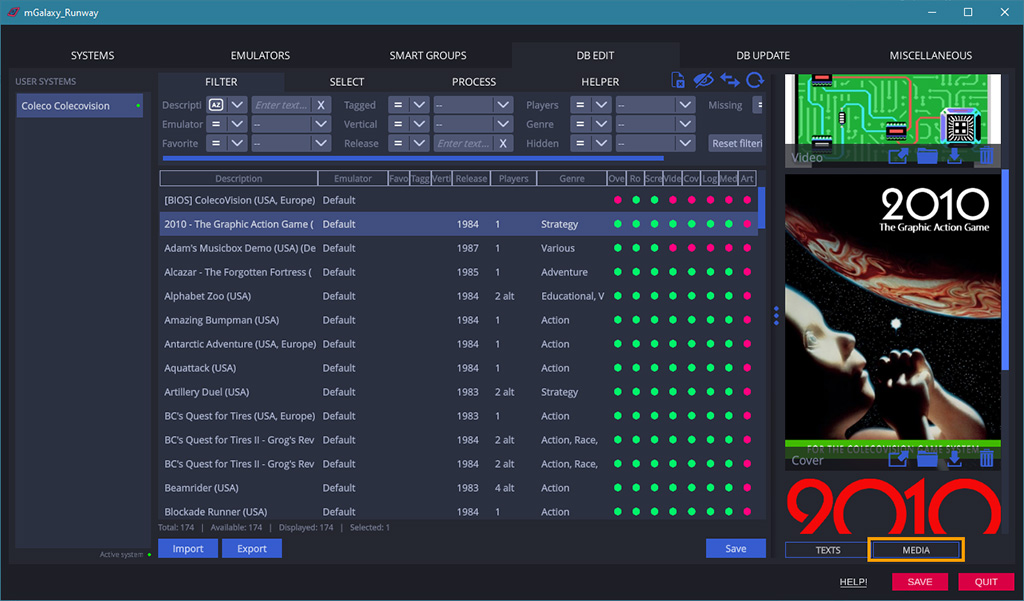This article is complementary to this one: Getting started, Creating a system
Download #
- Download and install mGalaxy (Download)
- Download and install Retroarch (Download)
Retroarch Configuration #
The navigation in Retroarch can be done by the mouse or by the keyboard. The keys used are:
| Moving through the options | Cursor keys |
| Selection | Enter key |
| Back | Backspace key |
| Quit | ESC key |
- Launch the ‘retroarch’ application
- Be sure that you are in ‘Main Menu’ and click/select ‘Load Core’
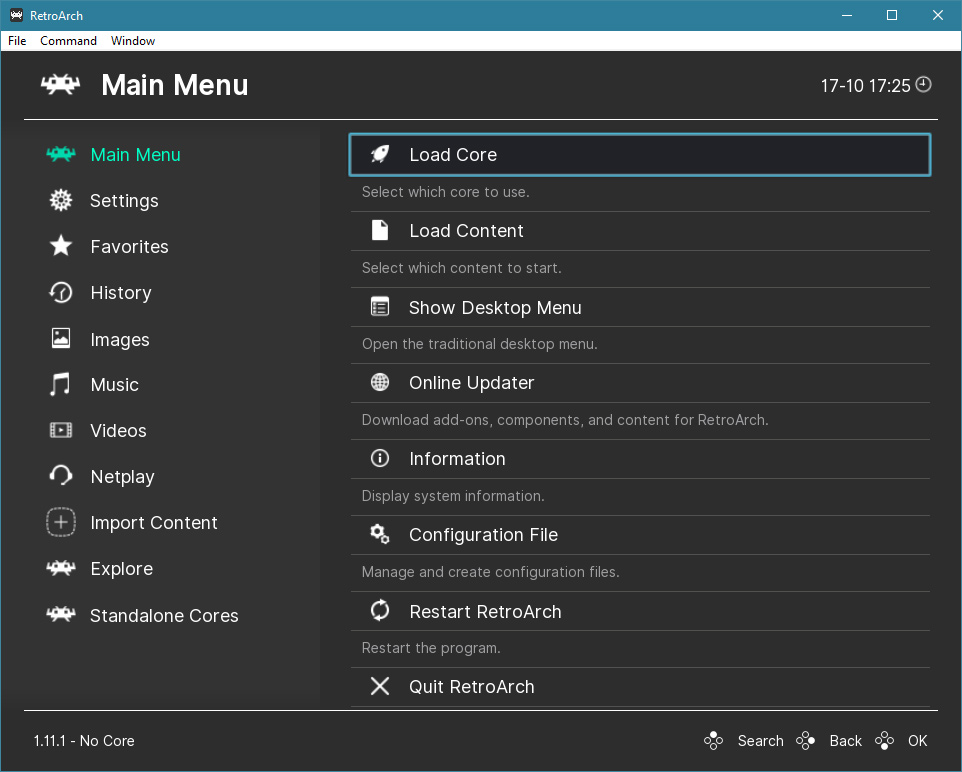
- Click/select ‘Download a Core’
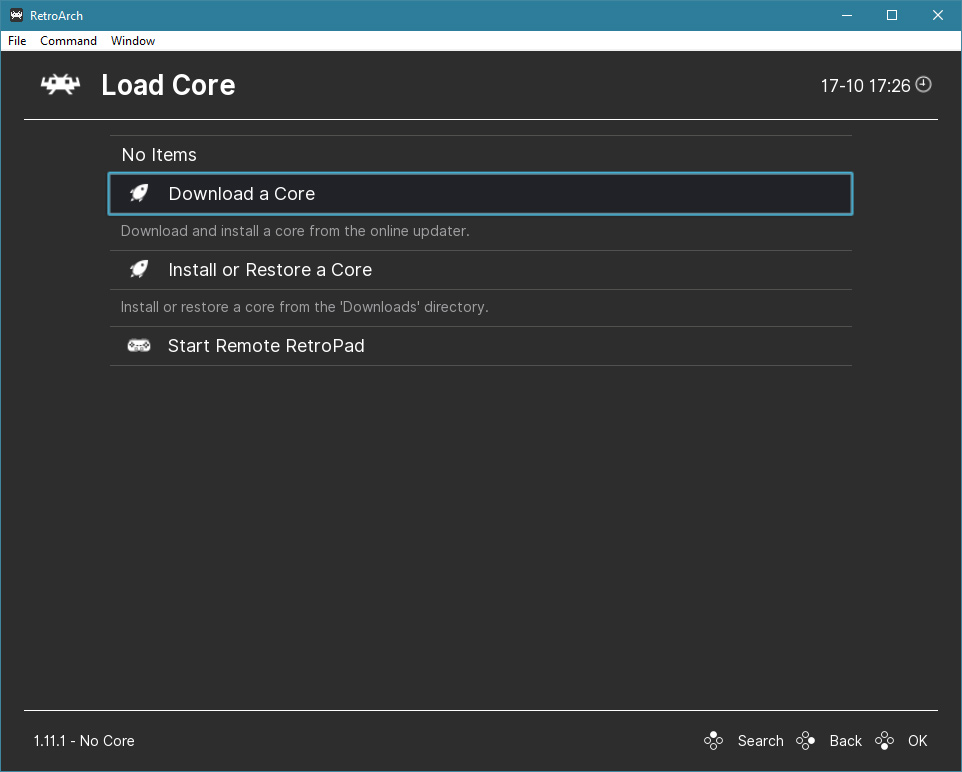
- Choose the system that you want to emulate (with sometimes several choices of emulators for the same system) and click/select it.
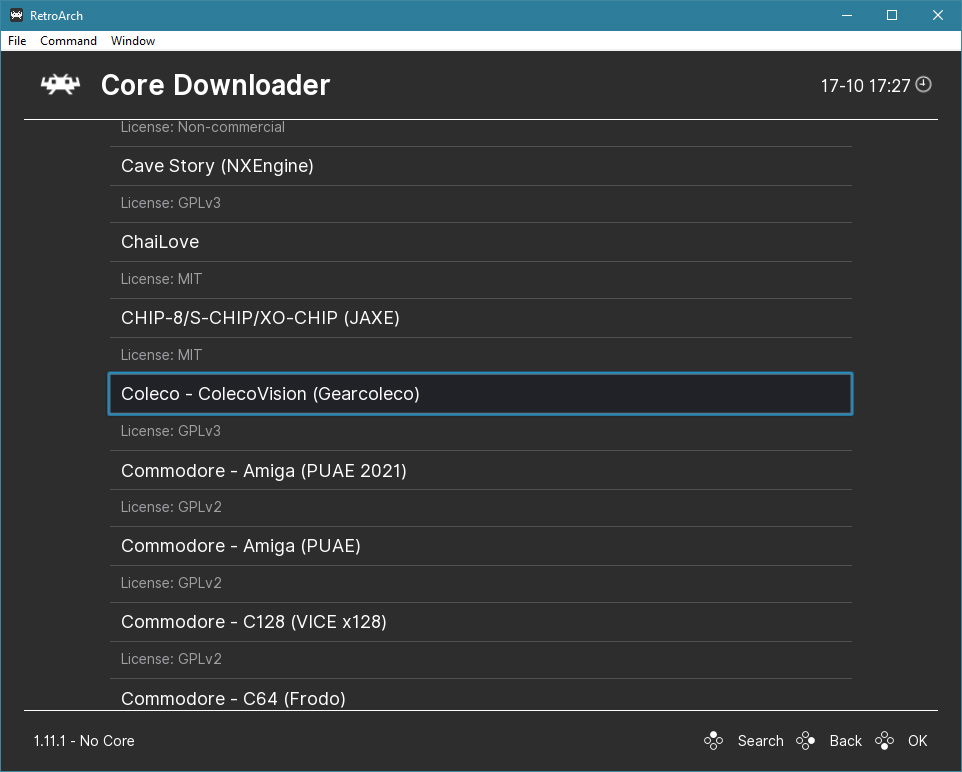
- ATTENTION: Note that some emulated systems require a BIOS to work.
In this case, the BIOS file(s) must be placed in the ‘system’ folder of Retroarch.
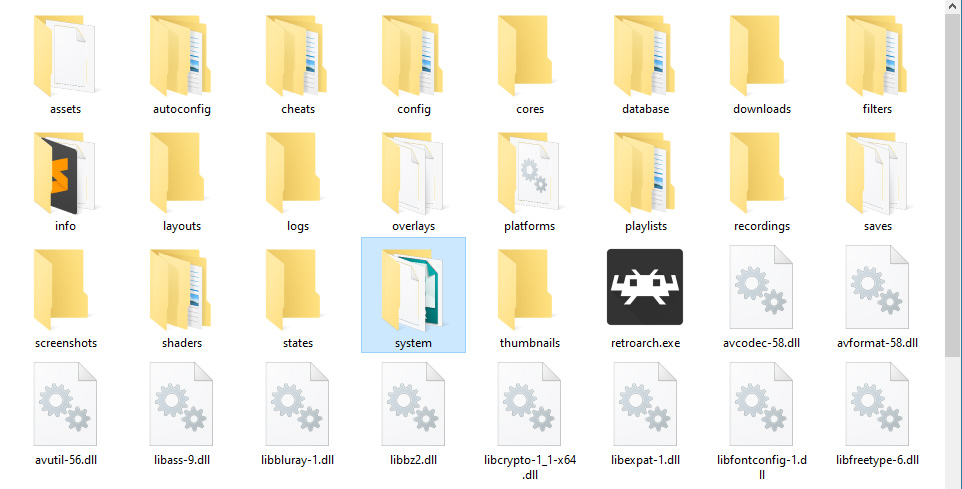
mGalaxy Configuration #
You will have the possibility to designate folders where mGalaxy will be able to draw elements such as roms, images, videos, covers… but also download them from the internet if you don’t have any.
We advise you to create these folders now, and we recommend that the names of these folders include certain keywords for the following reason:
TIP #
When you enter the path to one of the folders, mGalaxy will automatically inspect the neighboring folders and try to find the other folders that have not been filled in yet and enter them automatically.
The keywords that mGalaxy will search for are:
- "rom" or "game", for the Roms folder.
- "snap" or "screen", for the Screenshots folder.
- "cover", "box" or "marquee", for the Covers folder.
- "art", "back" or "illus", for the Arts folder.
- "movie", "video" or "vids", for the Videos folder.
- "logo", for the Logos folder.
- "medium" or "media", for the Media folder.
So, if for a system you have grouped in the same place the folders "Roms", "Screenshots", "Videos", "Covers", "Logos", "Arts", know that by informing only one to mGalaxy_Runway it will automatically find and enter all the others for you!
- Launch the ‘mGalaxy_Runway’ application
- Click on the ‘Add system’ button
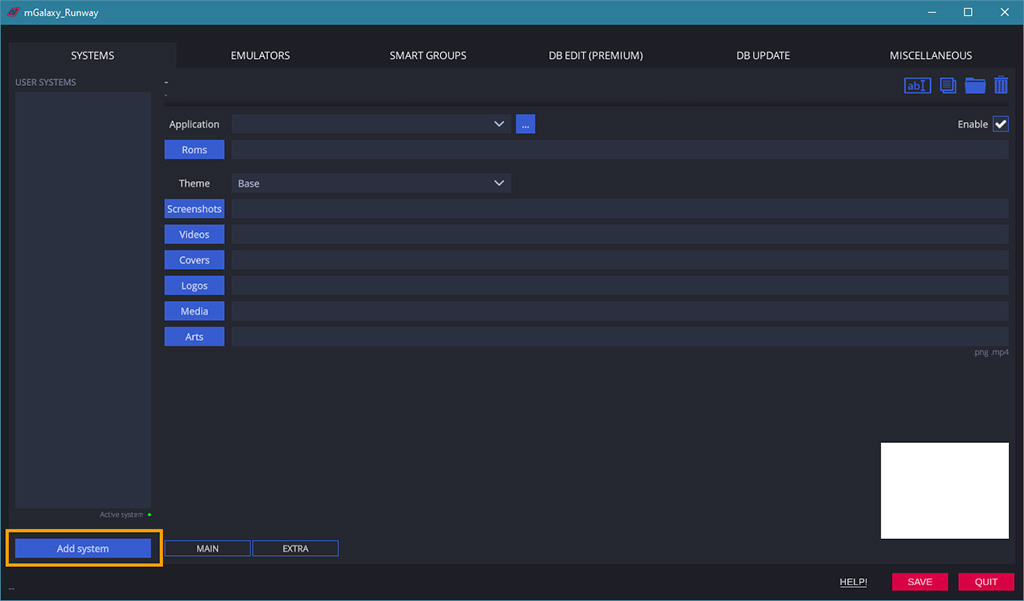
- Scroll to find the desired system
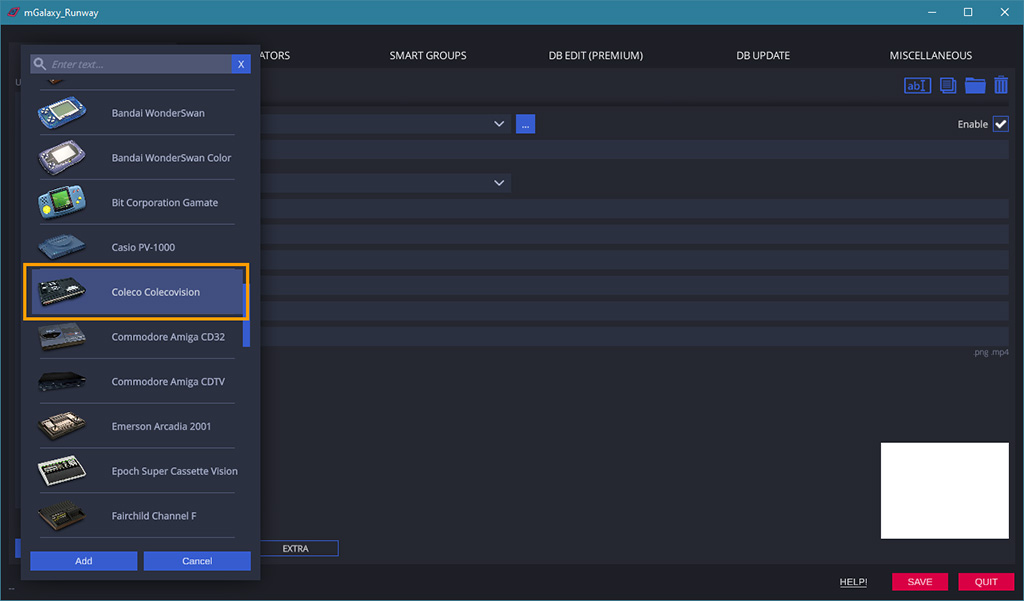
- …or use the ‘filter’ field to limit the search to a keyword
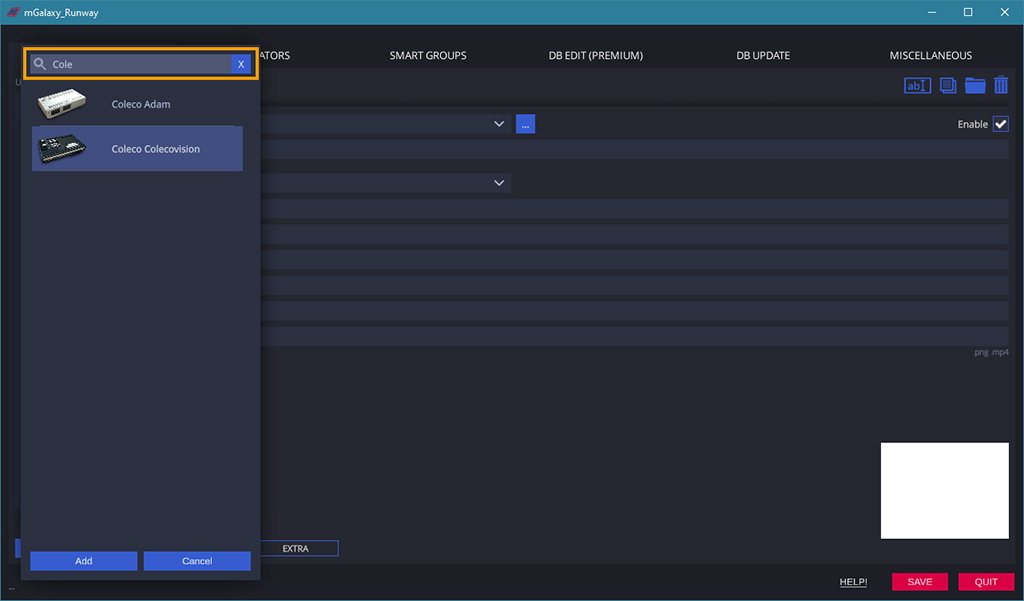
- Click on the ‘Add’ button
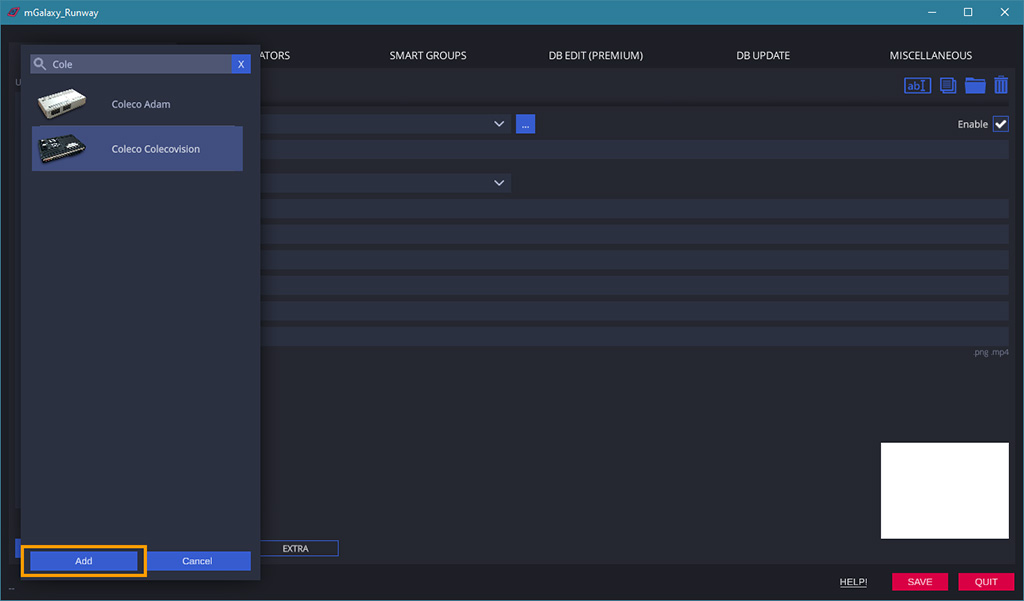
- Select the Retroarch emulator
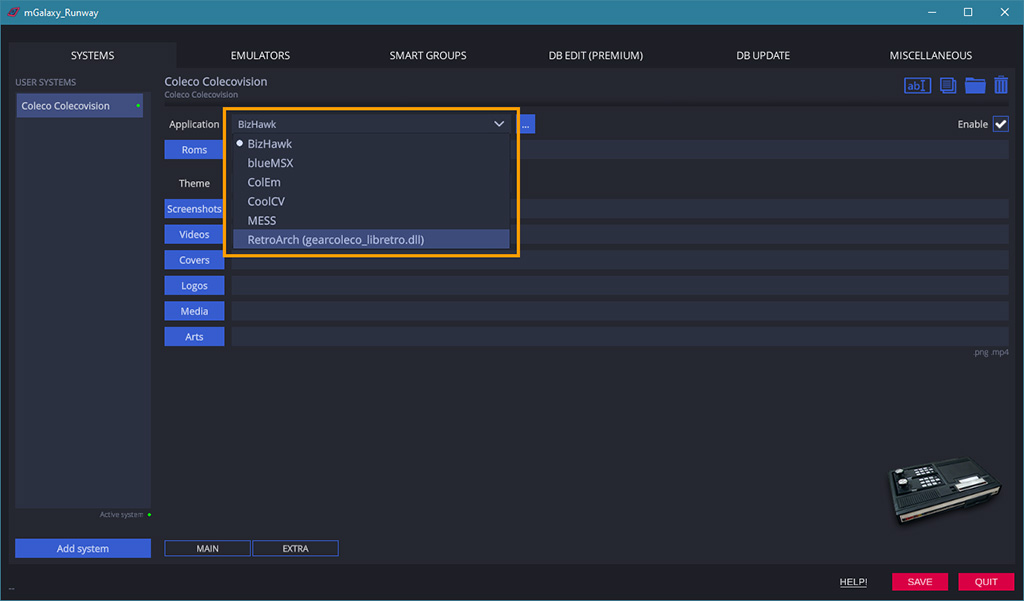
- mGalaxy_Runway will detect that the path to the emulator has not been specified yet and will suggest you to do it now. Click the ‘Yes’ button.
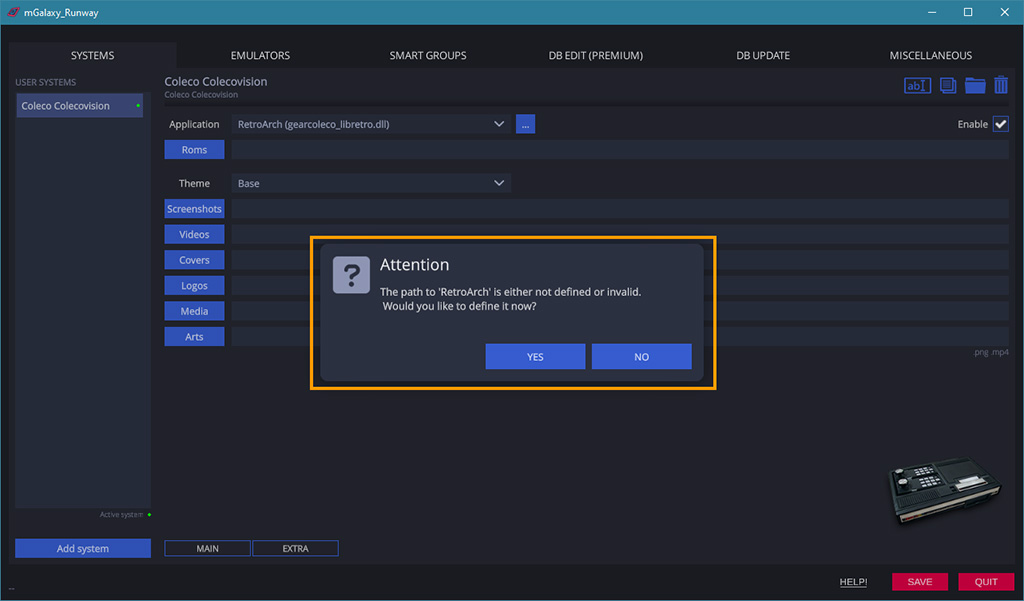
- mGalaxy_Runway will automatically switch to the ‘Emulators’ tab and select the emulator in question.
Click on the ‘Application’ button to open the dialog box that will allow you to select the ‘Retroarch’ application
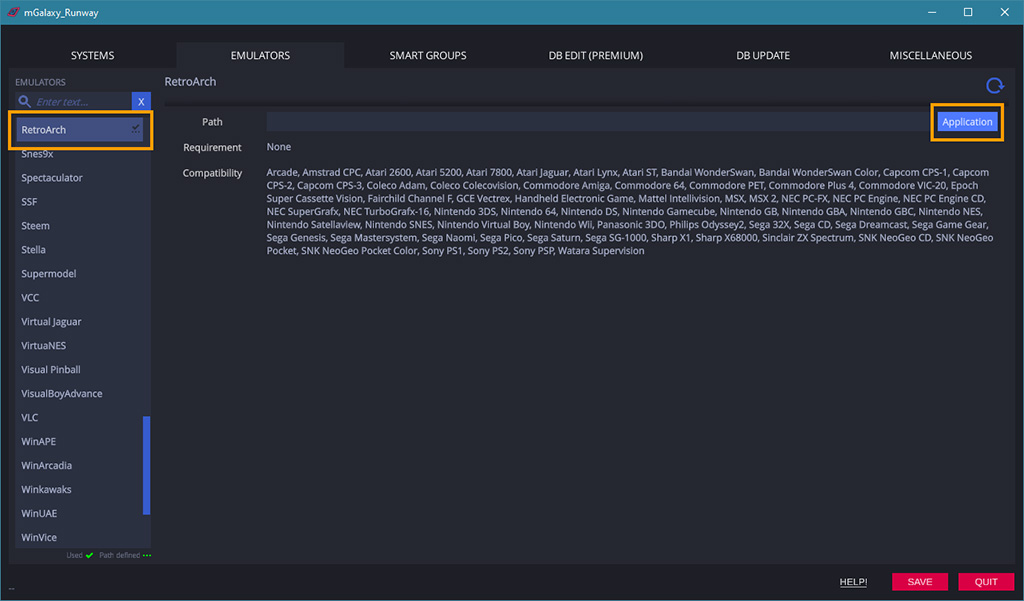
- Go back to the ‘Systems’ tab and click on the ‘Roms’ button to open the dialog window that will allow you to specify where the folder containing your ‘Roms’ (game files) is located
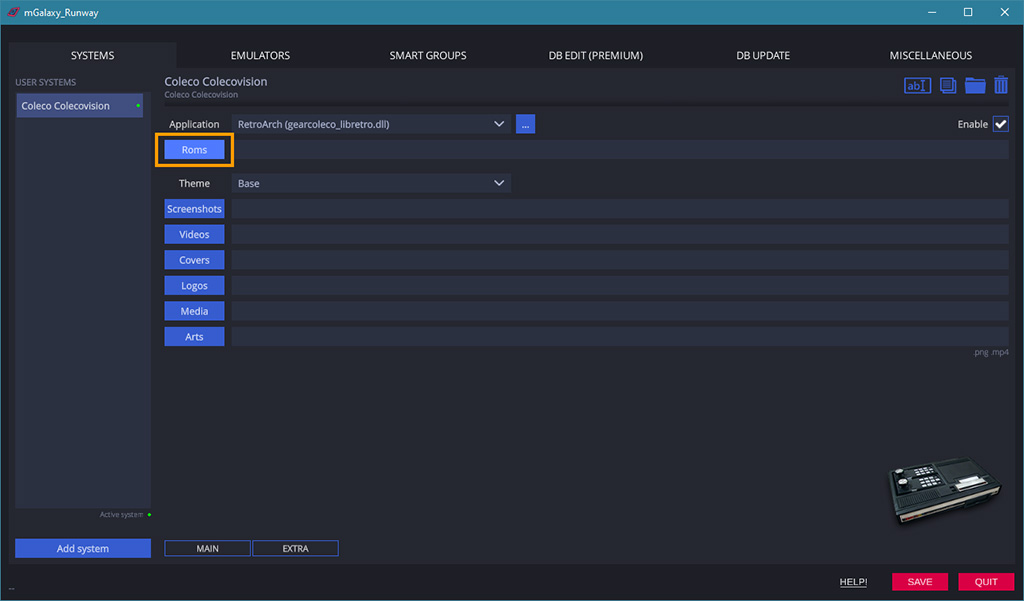
- If you have created folders with certain keywords (as explained in the ‘Tip’ box above), you should find that the other folders have been automatically selected!
This might also be a good time to think about saving everything that has been achieved so far.
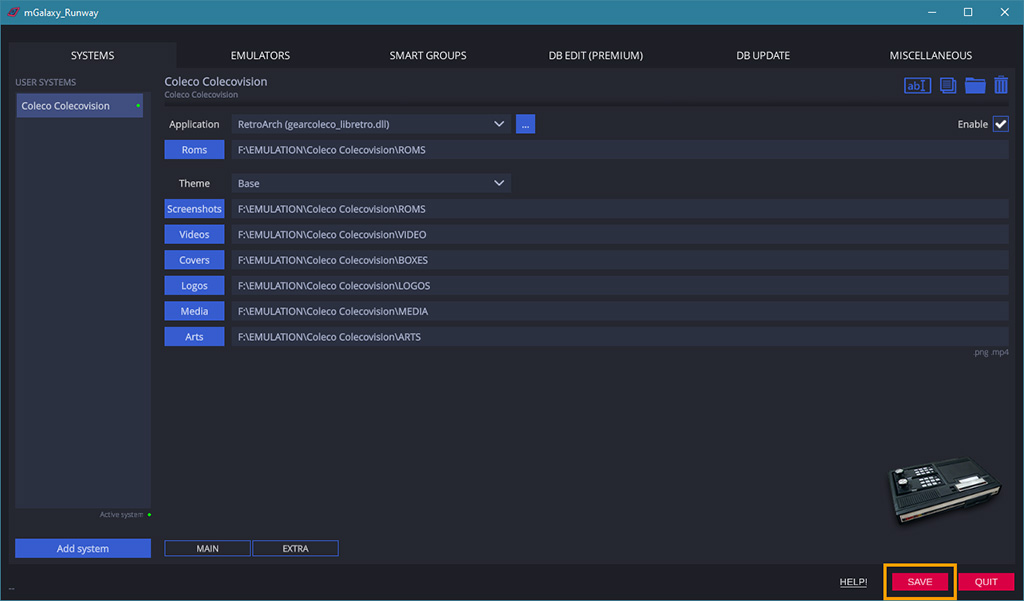
- We will now create the database for this system.We can use mGalaxy without a database, but the database will allow us to enter information about the game, such as a description, its genre, its year of release, its multiplayer compatibility,…Go in the tab ‘DB Update’, and click first on the button ‘Update’ in the block ‘Roms – Data Update’.
This action must be done only once and then every time you add new game files to this system. It will allow mGalaxy_Runway to create a rudimentary database containing the names of the games.Once this is done, we will bring back the text and image data from the games.
In the ‘Data’ section, check the type of elements you would like to bring back and the preferred language for the description.You also need to fill in the ‘login’ and ‘password’ fields of the desired server!
You can choose between:
- Emumovies (link)
- Screenscraper (it is the only one that allows you to download the ‘text’ type elements) (link)
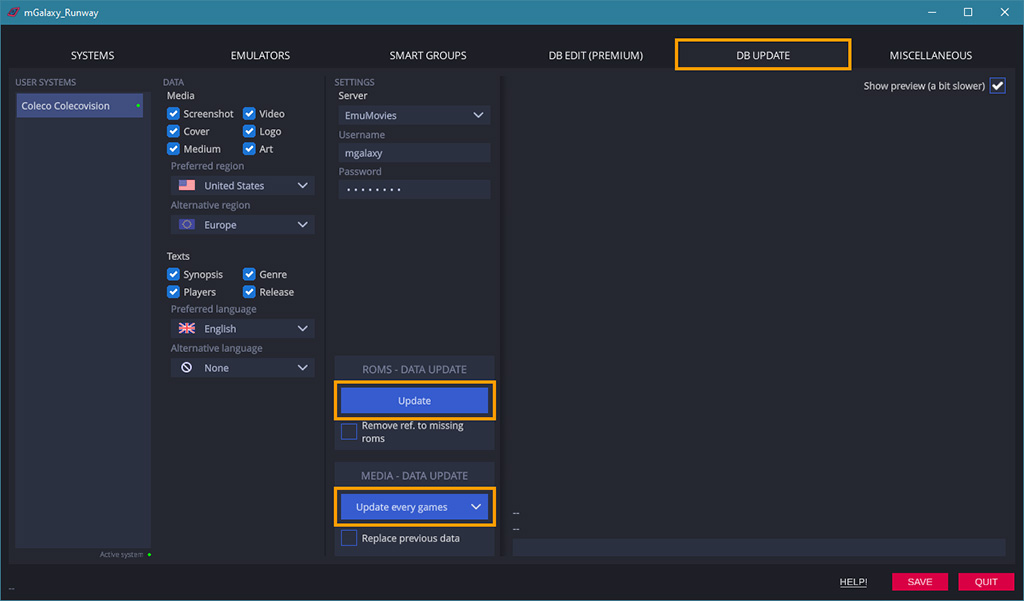
- If you switch to the ‘DB Edit’ tab you will see that you now have all the text and image data!
